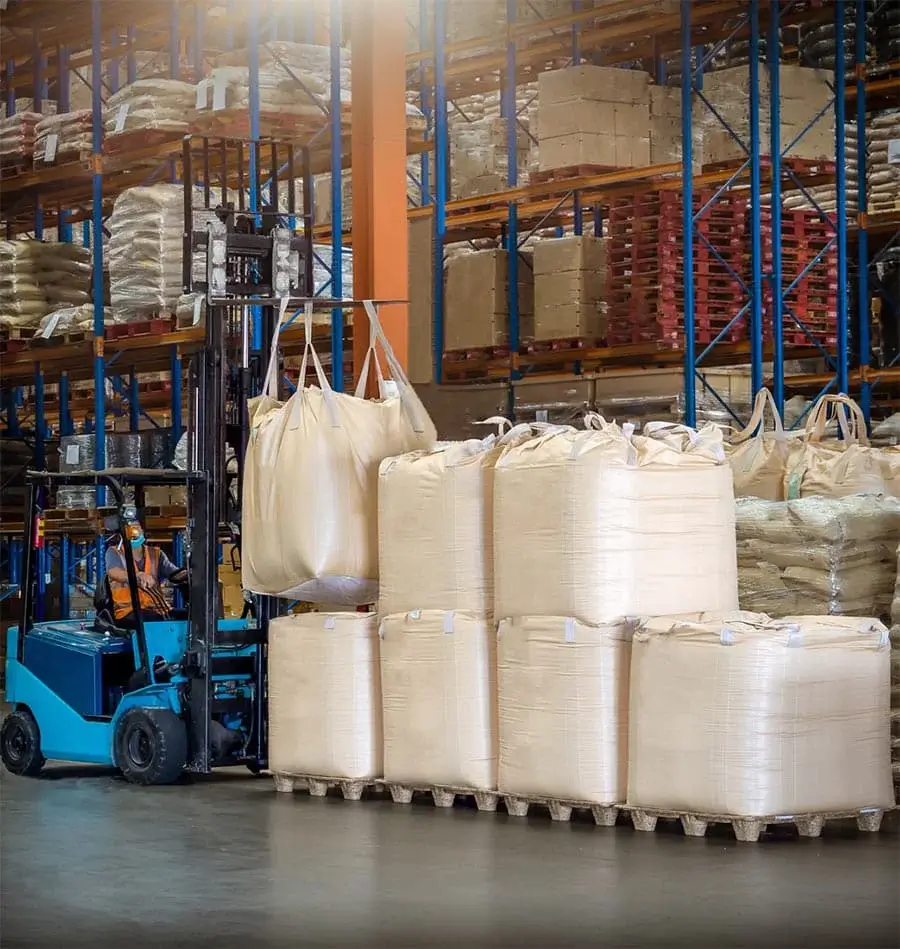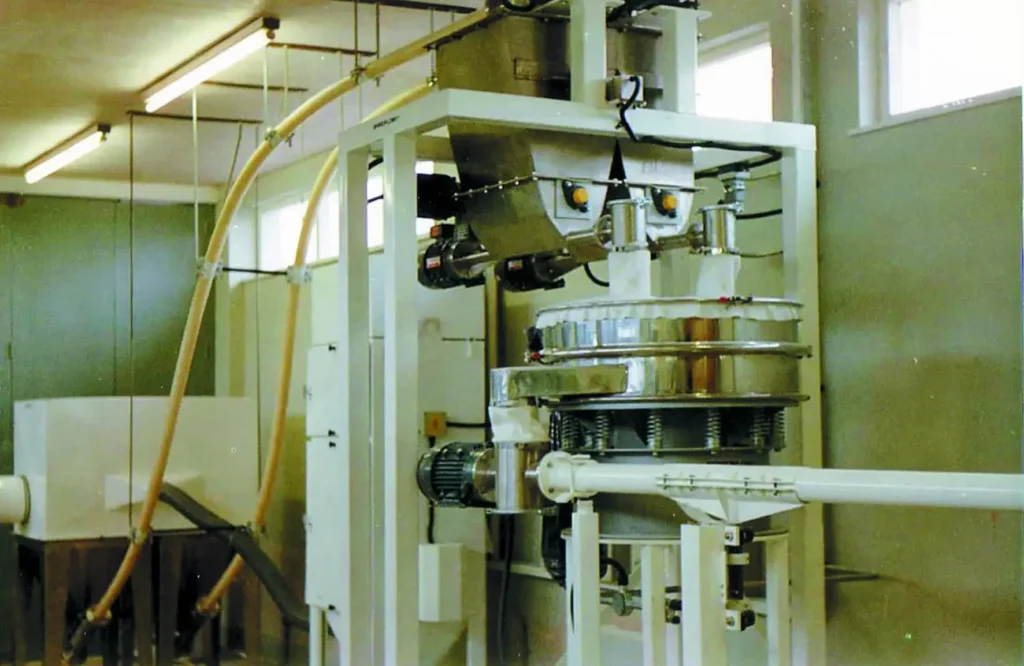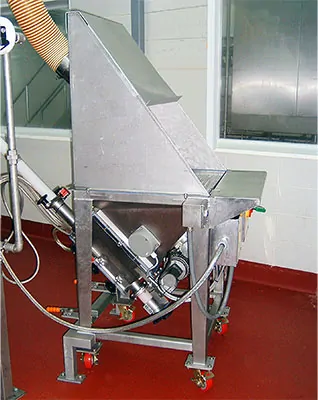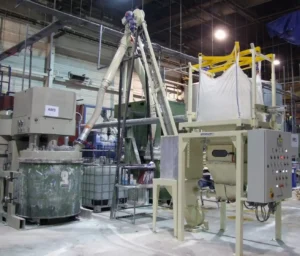Handling hazardous ingredients in bulk bags is a tricky process that demands precision and strict safety measures. Ensuring the safe handling of these materials in industrial conveyor systems is paramount to prevent potential explosions and health risks. In this comprehensive guide, we go over the critical aspects of managing such substances, including mitigating static discharge, effective dust containment, and prioritizing human safety.
Handling hazardous ingredients in bulk bags requires a meticulous approach. It involves not only preventing potential explosions but also safeguarding human health. Let’s explore what’s the best approach to ensure the operator’s safety and successful manufacturing with a flexible screw conveyor and all other conveyor technologies.
Understanding Why Handling Hazardous Ingredients in Bulk Bags Is Important
The safety protocols and practices surrounding hazardous materials are essential for preventing catastrophic consequences. It just can’t be overstated, particularly when integrated into a conveyor belt system or tubular drag system.
Here are two potential hazards that can arise during bulk bag handling:
- Explosion – During filling or discharging, some bulk solids can generate enough static charge to ignite flammable vapors, gasses, or dust. Also, various bulk solids, if allowed to accumulate in a high enough concentration, may explode if exposed to an ignition source.
- Health hazard – Some bulk solids contain hazardous substances that can pose health risks to workers when they come into direct contact with them. This can include exposure to toxic or carcinogenic materials, causing respiratory problems or other health issues.
- Dust emission – Dust emissions are common during the filling and discharging of bulk bags, especially when dealing with fine powders. These emissions can be harmful to both workers’ health and the surrounding environment.
Mitigate Static Discharge Risks
To mitigate static discharge risks in bulk bag handling, careful consideration of both bag and equipment design is essential, no matter if you’re dealing with conveyor belts or a tubular drag system. It’s important to know that bag and equipment design are two ways to mitigate the risk of static discharge.
Of the four types of bulk bags (Type A, B, C, and D), typically only types C and D are used to prevent static discharge leading to explosions.
- Type C Bulk Bags
Type C bulk bags feature conductive fabric or threads that are woven into fabric that doesn’t conduct electricity. An essential element of these bags is the existence of a grounding point, which connects all the fabric, threads, or filaments. This grounding point should be connected to an external ground during the filling and discharging procedures, ensuring the secure release of static charge.
- Type D Bulk Bags
Type D bulk bags are constructed from fabric that allows static charge to be dissipated without being connected to the ground. The advantage of Type D bags is that operators are not required to make a ground connection with the bag before the filling and unloading process – a task that can be easily forgotten, resulting in disaster.
- Other Equipment
Equipment employed in environments where static discharge could ignite flammable materials should, at a minimum, feature ground lugs. The level of safety may necessitate electrical components to be intrinsically safe or explosion-rated, depending on the Area Classification. These measures collectively contribute to a safer handling process in the presence of static discharge risks.
Compliance and Safety Measures
Compliance and safety measures are integral when it comes to handling hazardous materials with a tubular and belt conveyor system and working with belt conveyor manufacturers. A critical aspect of this is the strict adherence to Standard Operating Procedures (SOPs) that outline the proper protocols for the handling of bulk bags.
Moreover, regulations, standards, and Area Classification considerations play a vital role in ensuring a safe working environment. These regulations are not only legally mandated but are crucial for ethical business practices. They dictate the specific safety measures and equipment requirements that must be met.

The Significance of Dust Containment in Preventing Explosions
Dealing with hazardous materials in bulk bags requires your utmost attention. Whether you’re using tubular and conveyor belt solutions, you must be aware that dust containment plays a crucial role in preventing explosions. If the product you’re handling can explode when there’s too much dust exposed to an ignition source, it’s essential to control the dust.
For filling bulk bags, you should use “twin-tube” fill heads that seal the bag tightly. The outer tube of the fill head connects to a dust collection system to safely remove the dusty air during filling.
When emptying bulk bags, make sure your equipment has dust containment features suitable for the specific hazard level. Different materials may need different containment methods. All equipment should also have electric components that are safe for the specific area classification to enhance safety when handling dust that could cause explosions.

Isolate the Human Contact and Ensure the Safety
Isolating human contact and ensuring safety is of essential importance. Bulk solids that are health hazards include various refined metals that are carcinogens and chemical compounds that cause respiratory problems. When dealing with these products, maximum dust containment is required.
Besides specialized bulk bag discharging equipment, opt to use innovative tubular drag solutions instead of traditional conveyor belt systems. Such equipment must prevent dust at the following steps in the bulk bag unloading process:
- Initial onset of product discharge – The point in time when the product begins to flow from the bulk bag can create a large amount of dust.
- Throughout bulk bag emptying – Of course, dust must be contained as the bulk bag is emptying.
- End of discharge – Near the end of the discharge cycle, the bulk bag will lose its shape. Equipment must be designed to maintain dust containment integrity at this crucial stage.
- Bag removal – Removing the empty bulk bag, still full of dust-laden air, must be done safely without exposing operators to dust.
What Is “Sifting” and How to Prevent It?
“Sifting” refers to the unintentional escape or release of fine particles or dust-like material from the bulk bag during the handling process. This can occur when the bulk bag is transported, lifted, or manipulated.
When sifting occurs, it can lead to a variety of issues, including contamination of the surrounding environment, exposure of workers to potentially harmful substances, and difficulties in maintaining proper dust containment.
To prevent sifting, conveyor systems manufacturers design bulk bags with special features, such as coatings or liners, to keep the contained materials securely inside the bag. That way, the risk of particle escape is reduced, and it maintains safety and containment during handling.

Partner With Spiroflow for Safe and Expert Bulk Material Handling Solutions
Handling hazardous ingredients in bulk bags is a complex but essential process that demands meticulous attention to safety, from mitigating static discharge risks to ensuring effective dust containment and safeguarding human health.However, when dealing with things like these, it’s best to have professionals by your side. Spiroflow is a trusted name in bulk material handling and conveyor solutions. We’ll assess any potentially hazardous bulk bag handling application to Standard Operating Procedures, standards and regulations, Area Classification, and other factors. Contact us today and explore our comprehensive range of safe and efficient handling solutions.





